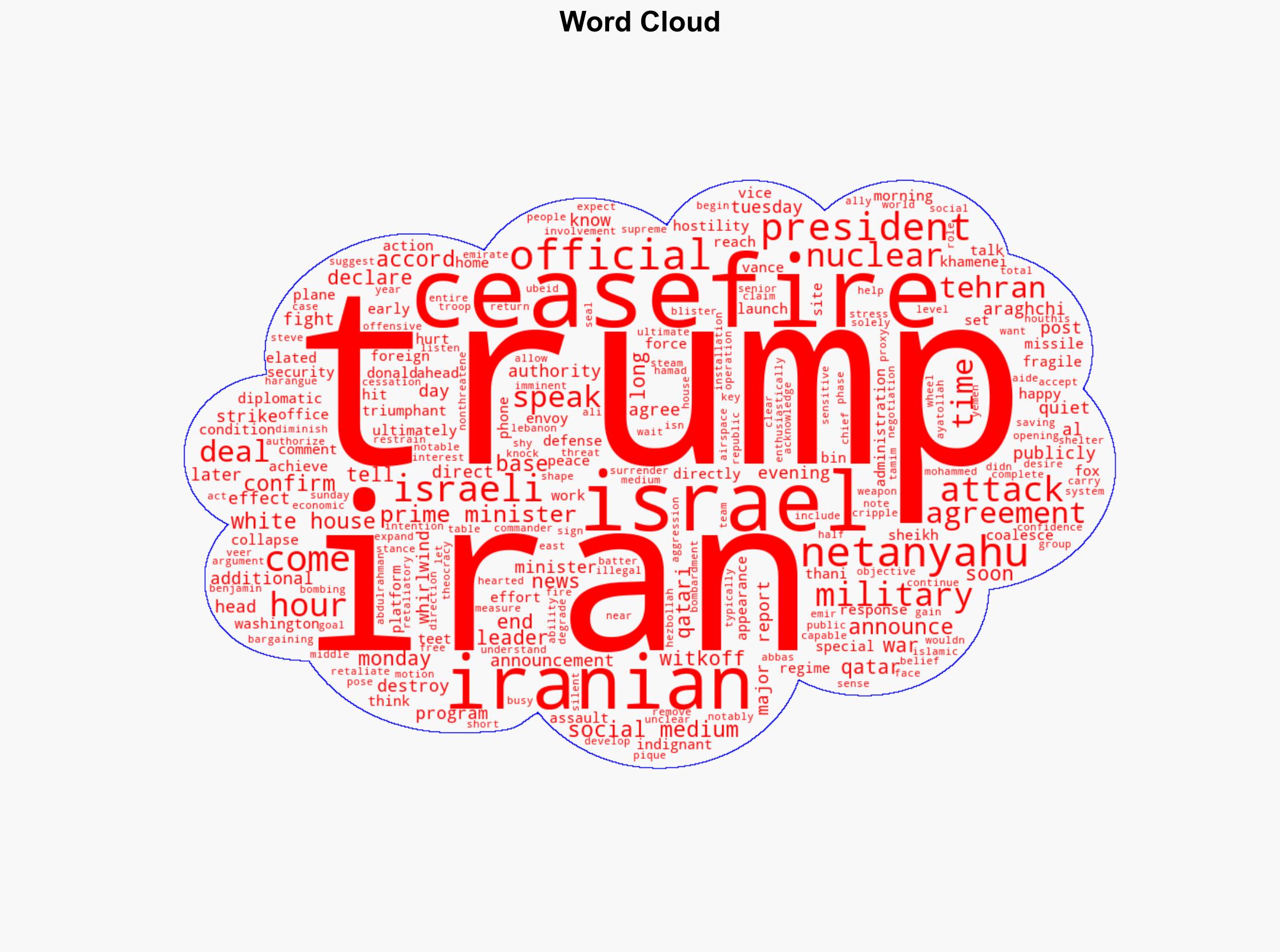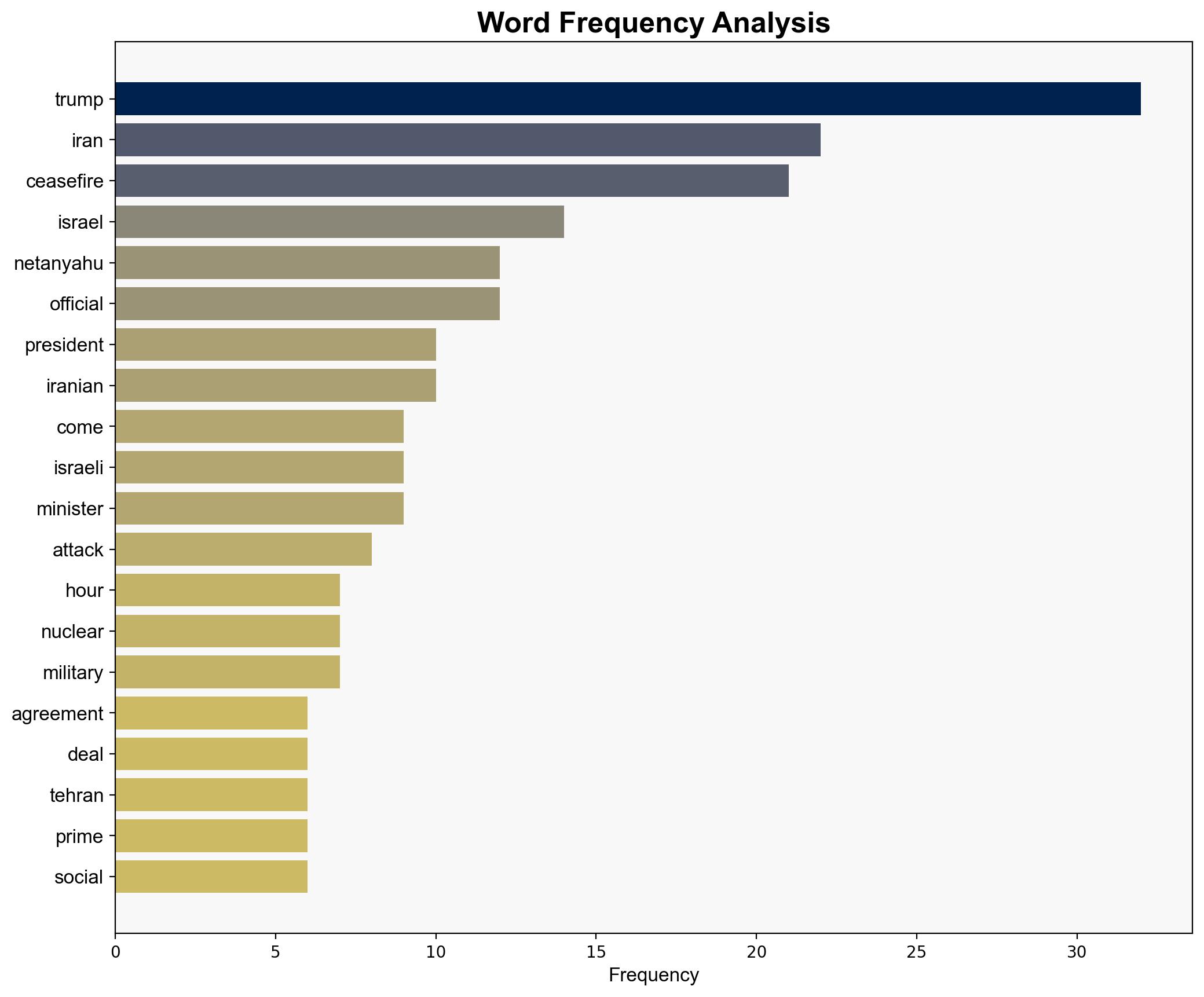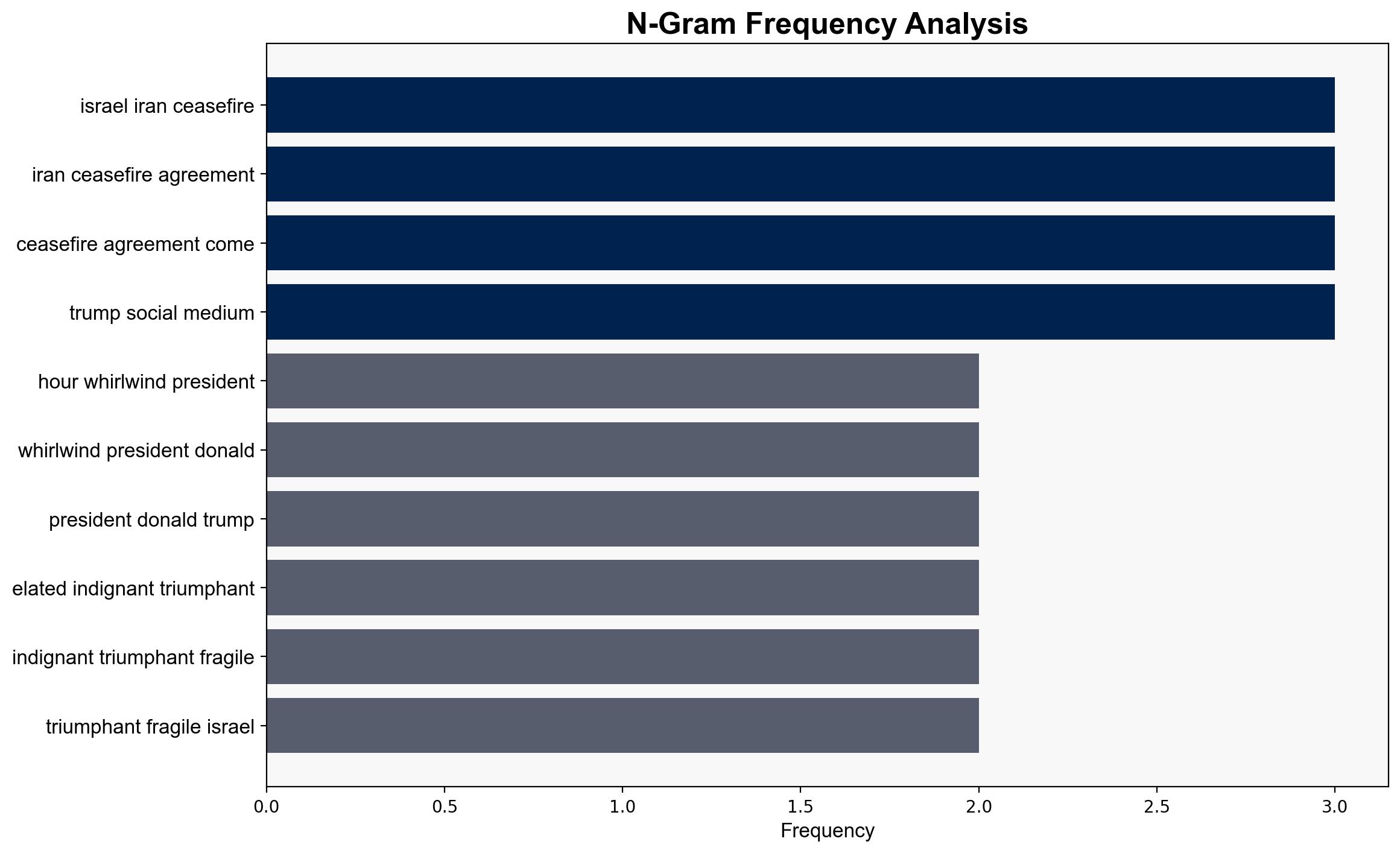A whirlwind 48 hours How Trump’s Israel-Iran ceasefire agreement came together – ABC News
Published on: 2025-06-25
Intelligence Report: A whirlwind 48 hours How Trump’s Israel-Iran ceasefire agreement came together – ABC News
1. BLUF (Bottom Line Up Front)
The recent ceasefire agreement between Israel and Iran, brokered by Donald Trump, represents a significant diplomatic achievement amidst escalating tensions. The agreement emerged rapidly following military actions and strategic negotiations. Key findings indicate that while the ceasefire temporarily halts military hostilities, underlying tensions remain unresolved, posing risks of future conflict. Recommendations focus on sustained diplomatic engagement and monitoring of compliance to prevent re-escalation.
2. Detailed Analysis
The following structured analytic techniques have been applied to ensure methodological consistency:
ACH 2.0
Analysis suggests that the primary intention of the ceasefire was to avert immediate military escalation while providing a platform for further diplomatic negotiations. The rapid assembly of the agreement indicates a reactive strategy to recent military developments.
Indicators Development
Monitoring of digital communications and propaganda from involved parties is crucial to anticipate shifts in operational planning or renewed hostilities. Indicators include changes in rhetoric or military posturing.
Narrative Pattern Analysis
The ceasefire narrative is being leveraged by both sides to project strength and justify actions to domestic audiences. This narrative adaptation could influence recruitment and incitement if perceived as a victory or concession.
3. Implications and Strategic Risks
The ceasefire reduces immediate military threats but does not address the core issues driving the conflict, such as Iran’s nuclear ambitions and regional influence. Potential risks include cyber retaliation, economic destabilization, and proxy engagements. The fragile nature of the agreement necessitates vigilance against cascading effects that could destabilize the broader region.
4. Recommendations and Outlook
- Enhance diplomatic channels to ensure compliance and address unresolved issues, particularly concerning nuclear capabilities.
- Implement robust monitoring mechanisms to detect early signs of ceasefire violations.
- Scenario Projections:
- Best Case: Sustained ceasefire leads to comprehensive negotiations and regional stability.
- Worst Case: Breakdown of the ceasefire results in renewed hostilities and regional conflict.
- Most Likely: Periodic tensions with intermittent diplomatic engagements.
5. Key Individuals and Entities
Donald Trump, Benjamin Netanyahu, Abbas Araghchi, Ayatollah Ali Khamenei, Sheikh Mohammed bin Abdulrahman Al Thani, Steve Witkoff
6. Thematic Tags
national security threats, cybersecurity, counter-terrorism, regional focus





